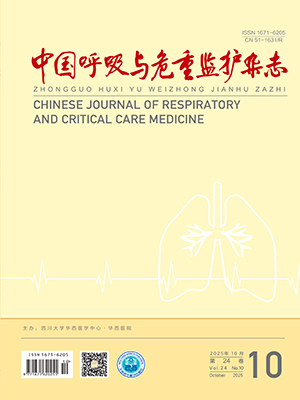Objective To study the role of ubiquitin-proteasome pathway in diaphragm of COPD rats. Mathods Thirty rats were divided into a normal control group and a COPD group. COPD model was established by exposure to cigarette smoke for three months. The protein levels of E2-14k and proteasome subunit C8 in diaphragms were measured by Western blot. The mRNA levels of ubiquitin and proteasome subunit C2 in diaphragms were measured bymeans of realtime polymerase chain reaction( RT-PCR) . Results Compared with the control group, the protein expression of E2-14k increased significantly in the COPD group ( 0. 81 ±0. 28 vs 0. 50 ±0. 25, P lt;0. 05) , but C8 protein level was not significantly different between the two groups( P gt;0. 05) . The mRNA expression of ubiquitin increased significantly in the COPD group( 0. 89 ±0. 20 vs 0. 50 ±0. 15, P lt;0. 05) , but C2 mRNA level was not significantly different between the two groups ( P gt; 0. 05 ) . Conclusions The mRNA and protein expressions of ubiquitin-proteasome pathway in diaphragmincreased significantly in COPD rats, suggesting that the activity of ubiquitin-proteasome pathway
increased, which lead to an increase of protein degradation.
Citation: HAN Fengfeng,XU Weiguo,LUO Yong,YANG Tianyun,CHEN Yingchun,ZHANG Yue.. The Ubiquitin-Proteasome Pathway Is Activated in the Diaphragm of COPD Rats. Chinese Journal of Respiratory and Critical Care Medicine, 2010, 9(2): 141-144. doi: Copy
Copyright © the editorial department of Chinese Journal of Respiratory and Critical Care Medicine of West China Medical Publisher. All rights reserved




